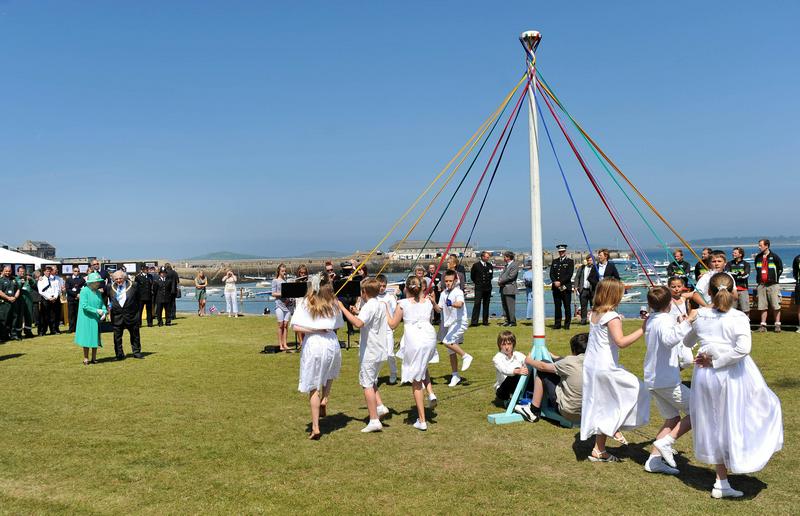May Day: Welcoming Spring
By | April 26, 2019

Although the Spring Equinox occurs several weeks earlier, many ancient cultures celebrate the return of Spring on May 1st. May Day is revered by the Celts in the British Isles, the Germanic people, and the Greeks and Romans. May Day is a pagan festival meant to herald in the warmer weather and to appeal to the pagan gods to bestow a plentiful growing season. Let’s look at how these cultures celebrated May Day and how the Celtic festival grew into an important event.

The Roman Floralia Festival
More than two thousand years ago, the ancient Romans welcomed Spring with the Floralia, or Festival of the Flora. This festival wasn’t just celebrated on May 1st…it was a five-day-long event, with dancing, flower gathering, theatrical performances, a circus, and feasting. Intended to honor the goddess, Flora, who ruled over plants—both flowers and crops—as well as fertility, the early festivals also included sacrifices made to appease Flora and win her favor. Later Floralia Festivals also included competitive sporting events, call the Ludi Florales, of six-day games. The festival wasn’t just fun and games. The pagan priests prayed to Flora to make the women and livestock fertile and the growing season ideal.

The German Walpurgisnacht
The Walpurgis Festival in Germany is held on the evening of April 30-May 1. On this night, it is believed that the witches gather to host a huge ceremony to await the coming of Spring. According to the stories, the witches would meet on Brocken, a tall peak in central Germany’s Harz Mountains. On this night, the people would pray to the pagan gods to protect them from the witches. As Christianity spread through Europe, most pagan holidays were transformed into Christian ones. This is what happened with the Walpurgisnacht. Rather than praying to the pagan gods, the people were encouraged to pray to Saint Walpurga, the person who converted the Germanic people to Christianity. Some vestiges of the pagan rituals remain. People still light bonfires on the evening of April 30 and let them burn into the early morning hours of May 1 as a way to ward off the evil witches.

The Celtic Beltane
Scotland, Ireland, and other parts of the British Isles still celebrate variations of Beltane, the ancient Celtic May Day festival. Meaning the “return of the sun”, the Beltane honored the return of the sun. The Celtic people believed that the sun was kept as a prisoner during the cold winter but was freed each spring to rule over the spring and summer. Large bonfires were lit to represent the freeing of the sun. The Celts performed various rituals to ensure the upcoming growing season would result in a bountiful harvest.

The Celtic Maypole
One of the most recognizable symbols of the Celtic Beltane is the Maypole. The exact origin and meaning of the Maypole, with its colorful ribbons, is unknown, but the tradition goes back at least as far as the early medieval era. The Maypole dancers, each holding onto the end of a ribbon, dance in a circle around the pole until the ribbons are so tightly wrapped around the pole that they are very short. Then the dancers switch directions and unwind the ribbons. The lengthening ribbons are said to symbolize the longer days of summer.

The Maypole as a Symbol of Fertility
Larger towns and cities would erect a permanent pole for May Day festivities, but smaller villages did not. In the morning, the villagers would eagerly roam through the woods in search of the Maypole that festival organizers set up in the night. Today, many historians think that the Maypole ritual began as a fertility ceremony, with the pole representing male fertility and the baskets of flowers standing for female fertility.

May Baskets
When the Puritans arrived in the Americas, they strongly discouraged the Maypole and other May Day celebrations, in part because of their secular and pagan roots. This is why the Maypole tradition did not spread to the United States. The only semblance of a May Day celebration to carry over to the U.S. is the May basket. In the 1800s and 1900s, folks celebrated May Day by gathering a basket of flowers, as well as small treats like candy, and anonymously hanging them from the doorknobs of friends and families’ houses. The task was usually done by young children.

